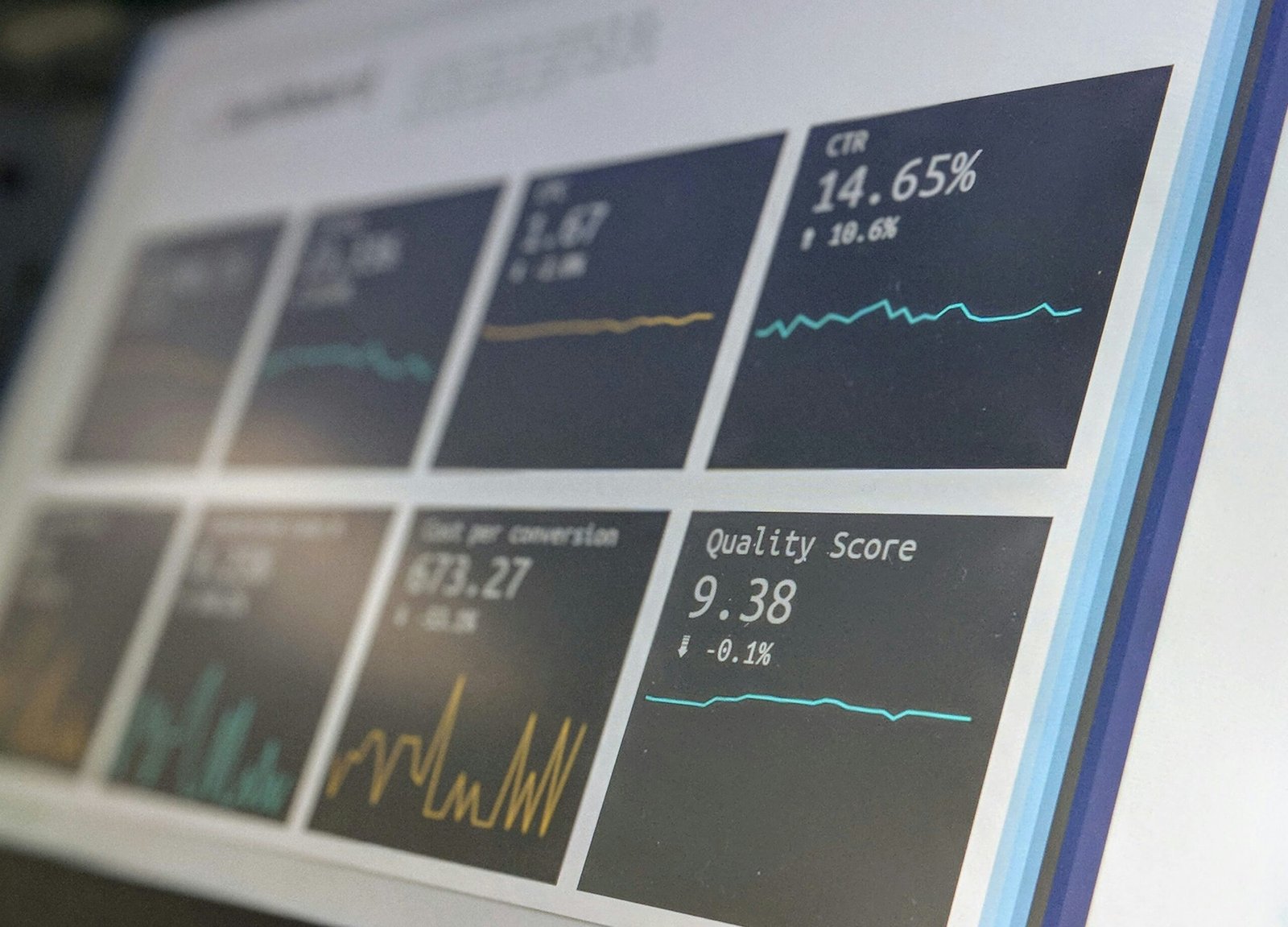Digital Ink by R. Dale Brunet: How AI Is Rewriting Publishing (Book Review, Key Ideas, and Who Should Read It)
What if a book didn’t end when you closed the cover? What if your favorite novel knew what you loved and adjusted—subtly and intelligently—so it felt like it was written just for you?
That’s the future Digital Ink explores with uncommon clarity. In this timely, idea-rich book, technologist and systems thinker R. Dale Brunet examines how artificial intelligence is reshaping the purpose, process, and power of storytelling. Not as a gimmick. Not as a tech demo. But as a realignment of what authorship can mean in the 21st century.
If you’ve felt torn between excitement and unease about AI in creative work, this book meets you right there. It asks a simple but profound question: What story are you choosing to tell—and how will it be remembered? Let’s unpack what makes Digital Ink worth your attention, where it pushes the conversation forward, and how its insights apply whether you’re an author, educator, editor, or curious reader.
Quick Summary: What Digital Ink Covers (and Why It Matters)
Brunet’s central thesis is bold: AI isn’t just another writing tool. It’s a shift in narrative architecture—from static text to living systems. Digital Ink explores:
- Machine-assisted creation: AI as a co-writer, researcher, and craft coach
- Dynamic narratives: Stories that adapt to context, reader preference, and format
- Reader interactivity: More agency, more feedback loops, more participation
- Ethical authorship: Consent, provenance, bias, and the future of creative rights
- Legacy and continuity: Preserving voice, memory, and meaning across generations
Here’s why that matters. Storytelling has always been a technology—language, print, film, games. AI is simply the next medium. But it demands new habits, new guardrails, and a deeper commitment to voice and truth so we don’t trade originality for optimization.
Who Is R. Dale Brunet—and Why Listen to Him?
Brunet brings 40+ years in technology and systems development, alongside creator-facing work that spans ethics, storytelling, and digital legacy. He developed Life Capsule AI, a platform focused on preserving human stories with intent and integrity—an effort at the crossroads of innovation and meaning.
That blend of “code and conscience” shows up throughout the book. He writes like someone who’s built complex systems and sat with what they mean for real people. The result is a rare mix of technical fluency and human sensitivity.
- If you want breathless hype, this isn’t that.
- If you want practical frameworks and ethical clarity you can use today, you’ll find a lot to underline.
The Big Idea: Story as System, Not Just Static Text
The most compelling lens in Digital Ink is the idea of “story-as-system.” Think of a story like a living app, not a frozen PDF. It has inputs (reader data, context), rules (ethics, author voice), outputs (narrative variations), and feedback loops (engagement, sentiment, iteration).
What changes when you view narrative this way?
- Authors become designers of experiences, not just pages
- Readers move from passive consumers to co-creators
- Editors curate both language and logic (guardrails, provenance, consistency)
- Publishers steward trust: accuracy, rights, and brand integrity
This isn’t random speculation. We already see the early forms in interactive fiction, branching narratives, and personalized recommendations. AI simply amplifies what’s possible and makes it scalable.
Machine-Assisted Creation: AI as the Thought Partner You Control
Digital Ink treats AI as a collaborator—not a replacement. Used well, it can:
- Brainstorm structures, arcs, and metaphors you might not consider
- Surface research, datasets, and citations faster
- Flag consistency issues in voice, continuity, and tone
- Generate test passages to prototype different approaches
Here’s the crucial distinction Brunet underscores: agency must stay with the human author. The model can draft, but you decide. The model can summarize, but you interpret. The model can remix, but your voice—and your judgment—frame the work.
If you want proof that AI is already changing creative workflows, look at how editors, marketers, and researchers are using generative systems for first drafts and analysis. Even conservative forecasts show transformation across content-heavy industries in the next few years (see McKinsey’s analysis of generative AI’s economic potential).
Dynamic Narratives and Reader Interactivity: From Choose-Your-Own to Choose-Your-Why
Interactive fiction isn’t new. What’s new is scale and intelligence. With AI, a narrative can become:
- Context-aware: It adapts tone or complexity based on reader preference
- Branching with purpose: Variations align with themes, not gimmicks
- Emotionally responsive: Feedback shapes pacing or emphasis over time
- Accessible by design: Multi-modal formats (text, audio, visual) generated in sync
Imagine an educational memoir that modulates reading level for students without losing literary integrity. Or a sci-fi novel that offers two alternate chapters based on the moral question you want to explore. Or a digital anthology that personalizes footnotes and historical context for each reader.
This is where the editorial craft evolves. The work is no longer only “What words go on the page?” It’s also “How does this system maintain voice and meaning across variations?” That requires rules, testing, and ethical guardrails.
Ethical Authorship and Ownership: Clarity Over Chaos
Digital Ink doesn’t dodge the hard stuff: consent, attribution, compensation, and bias.
- Consent and provenance: Where did training data come from? Can we trace sources?
- Attribution and compensation: How do we credit contributors (human and machine)? How do licensing and royalties evolve?
- Bias and safety: How do we audit models and outputs to reduce harm and stereotyping?
- Transparency: When do we disclose AI involvement—and how?
If you want grounding beyond industry talk, it’s worth reading the U.S. Copyright Office’s guidance on AI and copyright and WIPO’s resources on AI and intellectual property. For values-level frameworks, see the OECD AI Principles and UNESCO’s Recommendation on the Ethics of AI.
Here’s why that matters to a working writer or publisher: trust is the brand. Readers will forgive experiments that are transparent and intentional. They won’t forgive shortcuts that compromise voice, accuracy, or consent.
Legacy, Memory, and Meaning: Preserving More Than Files
One of the book’s freshest contributions is its take on legacy. AI can help us preserve more than text—it can help us preserve context. Not just the book, but the backstory: interviews, annotations, drafts, audio reflections, even interactive Q&A with a living or posthumous author profile.
Think less “digital archive” and more “living capsule.” That’s where Brunet’s Life Capsule AI background shines. The goal isn’t to fabricate a person. It’s to responsibly capture their values, voice, and intent so future generations experience a richer, more honest form of continuity.
- For families: Structured memoirs that evolve as new material is added
- For educators: Author “office hours” driven by verified materials
- For cultural heritage: Community narratives with consent and provenance baked in
If you’ve ever wished your grandparents left more than a photo album, this vision hits home.
Where Digital Ink Shines
Several strengths make the book stand out:
- Systems thinking you can use: Story-as-system is a powerful mental model for planning AI-assisted work without losing your voice.
- Ethical clarity: The emphasis on consent, provenance, and reader trust is consistent and actionable.
- Cross-domain fluency: Brunet connects creative values with technical constraints in plain language.
- Practical optimism: The book acknowledges risk without sliding into fear, hype, or fatalism.
It’s rare to find this combination: a technologist who respects human nuance, and a creator who understands real-world constraints.
Where It Sparks Debate (and That’s Healthy)
No book can cover everything. Digital Ink opens doors that some readers will want to push even further:
- Rights and royalties: We’re still early on frameworks for compensating creators whose works train models. Keep an eye on evolving guidance from the Authors Guild and public cases.
- Model bias and guardrails: How do small and mid-tier publishers afford model audits, red-teaming, and watermarking at scale?
- The homogenization risk: If everyone uses the same assistants, will voice flatten? Brunet urges strong style governance to fight this—but it’s an ongoing challenge.
- Disclosure norms: When and how should AI involvement be disclosed to readers? Expect norms to shift fast as industry groups weigh in (see PEN America’s AI principles).
Debate here is a feature, not a bug. It keeps the industry honest.
Practical Playbooks Inspired by Digital Ink
If you finish this book and feel inspired, here are concrete moves you can make right now.
For authors: – Write an AI style guide: Define tone, pacing, metaphors, taboo topics, and narrative “non-negotiables.” Feed it to your tools. – Separate idea-generation from final prose: Use AI for brainstorming and research, but always rewrite in your own voice. – Track provenance: Keep a simple log of what tools you used and how. It protects you and builds reader trust. – Build a “story bible”: Characters, world rules, timelines—so AI helpers don’t drift.
For editors: – Create an AI editorial checklist: Disclosure, fact-checking, bias scan, continuity, and sensitivity review. – Set thresholds for automation: What can be assisted (summaries, comps) and what must be human-only (final line edits, voice decisions)? – Pilot small: Start with internal workflows (metadata, pitches), then expand to reader-facing features.
For publishers: – Invest in data hygiene: Clean, structured, rights-cleared archives become a durable advantage. – Establish consent pipelines: Contributors should know when and how their work may train internal systems. – Add provenance to product pages: Readers value transparency—“This edition includes AI-assisted footnotes vetted by our editorial team.” – Train teams: Workshop ethics, disclosure, and prompt design so policies aren’t just PDFs.
For educators: – Teach with transparency: Assignments that explicitly use AI—with reflection on process and originality. – Build critical readers: Have students compare human-written and AI-assisted texts and discuss voice and authenticity. – Preserve student legacy: Encourage annotated portfolios, not just finished assignments.
How Digital Ink Fits the Bigger AI-in-Publishing Picture
Zooming out, Digital Ink aligns with broader research:
- The generative wave is real and rising. See the Stanford AI Index for adoption trends and capabilities.
- Ethics and policy are catching up, not leading. International bodies like OECD and UNESCO set principles, but industry norms will shape day-to-day practice.
- Copyright is evolving in real time. The U.S. Copyright Office continues to clarify where human authorship begins and ends.
In short: the ground is shifting under everyone’s feet. Brunet’s contribution is a practical compass, not a rigid map.
Memorable Ideas You’ll Carry With You
- Story-as-system: Design rules and boundaries, not just paragraphs.
- Human-in-command: Tools assist; authors decide.
- Provenance is product: Traceability builds trust (and avoids headaches).
- Voice is strategy: Codify it, protect it, teach it to your tools.
- Legacy as living archive: Preserve meaning, not just media files.
Who Should Read Digital Ink?
- Working authors exploring AI without losing voice
- Editors and publishers building ethical, scalable workflows
- Educators teaching writing, media, or digital literacy
- Technologists designing tools for creators
- Readers curious about where storytelling is headed next
If you want a hype-free, forward-looking guide to AI and narrative craft, this belongs on your desk.
Final Verdict
Digital Ink is a thoughtful, accessible, and grounded tour of AI’s impact on storytelling. It’s strongest when it treats narrative as a living system and ethics as a design choice, not an afterthought. If you make things with words—or help others do so—Brunet will give you language, lenses, and checklists you can use tomorrow.
No book can settle every debate. But this one elevates the conversation and equips you to participate with clarity and care. That’s a win.
FAQs: People Also Ask
Q: Will AI replace authors? A: No. AI can draft, summarize, and remix, but it lacks lived experience and moral judgment. The most durable work will be human-led and AI-assisted. Even the U.S. Copyright Office emphasizes human authorship as the core of protectable works.
Q: How does AI change publishing jobs? A: Roles shift rather than vanish. Expect more emphasis on data hygiene, metadata, provenance, and experience design. Editors become stewards of both language and systems. See industry-wide impacts in the Stanford AI Index.
Q: Is AI-assisted writing ethical? A: It can be—if you use consented data, track provenance, disclose appropriately, and keep human authorship in command. Frameworks like the OECD AI Principles and UNESCO’s ethical guidance are good anchors.
Q: Do readers want dynamic or interactive books? A: Some do, some don’t. The key is purpose. Interactivity should deepen theme and voice, not distract. Pilot features, gather feedback, and maintain a static “canonical” edition alongside dynamic experiences.
Q: How can authors protect their voice when using AI? A: Create a detailed style guide, always rewrite model text into your own voice, and use AI for structure and research rather than final prose. Keep a provenance log to stay transparent with readers and publishers.
Q: What about copyright for AI-generated content? A: In many jurisdictions, purely AI-generated text may not be copyrightable. Human authorship and creative control are key. Follow developments at the U.S. Copyright Office and WIPO.
Q: How do I start integrating AI into my writing workflow safely? A: Start small. Use AI for brainstorming and outlining. Set clear ethical rules, including no use of sensitive or non-consented data. Always fact-check and rewrite. Document your process.
Q: Can AI help preserve family stories and cultural memory? A: Yes—if used responsibly. AI can organize, transcribe, and annotate interviews and artifacts, creating interactive archives with clear provenance and consent. This aligns with the legacy themes Digital Ink highlights.
The Takeaway
AI won’t decide the future of storytelling—authors, editors, educators, and readers will. Digital Ink is a smart, humane guide to making those choices with craft and conscience. If you care about voice, values, and vision in an AI-accelerated world, it’s worth your time.
Actionable next step: Write a one-page AI policy for your creative work—your voice rules, your ethics, your disclosure norms. Then experiment in small, safe ways. If you want more analysis like this, subscribe for future reviews and practical AI-in-publishing playbooks.
Discover more at InnoVirtuoso.com
I would love some feedback on my writing so if you have any, please don’t hesitate to leave a comment around here or in any platforms that is convenient for you.
For more on tech and other topics, explore InnoVirtuoso.com anytime. Subscribe to my newsletter and join our growing community—we’ll create something magical together. I promise, it’ll never be boring!
Stay updated with the latest news—subscribe to our newsletter today!
Thank you all—wishing you an amazing day ahead!
Read more Literature Reviews at InnoVirtuoso
- Shadowbanned: The War on Truth and How to Escape It — Book Review, Insights, and the Digital Free Speech Survival Guide
- The Art and Science of Vibe Coding: How Kevin L Hauser’s Book Unlocks the Future of No-Code AI Software Creation
- Quantum Computing: Principles, Programming, and Possibilities – Why Anshuman Mishra’s Comprehensive Guide Is a Must-Read for Students and Researchers
- Book Review: How “Like” Became the Button That Changed the World – Insights from Martin Reeves & Bob Goodson
- Book Review: Age of Invisible Machines (2nd Edition) — How Robb Wilson & Josh Tyson’s Prophetic AI Playbook Prepares Leaders for 2027 and Beyond
- Almost Timeless: The 48 Foundation Principles of Generative AI – Why Mastering Principles Beats Chasing Hacks
- The AI Evolution: Why Every Business Leader Needs Jason Michael Perry’s Roadmap for the Future







